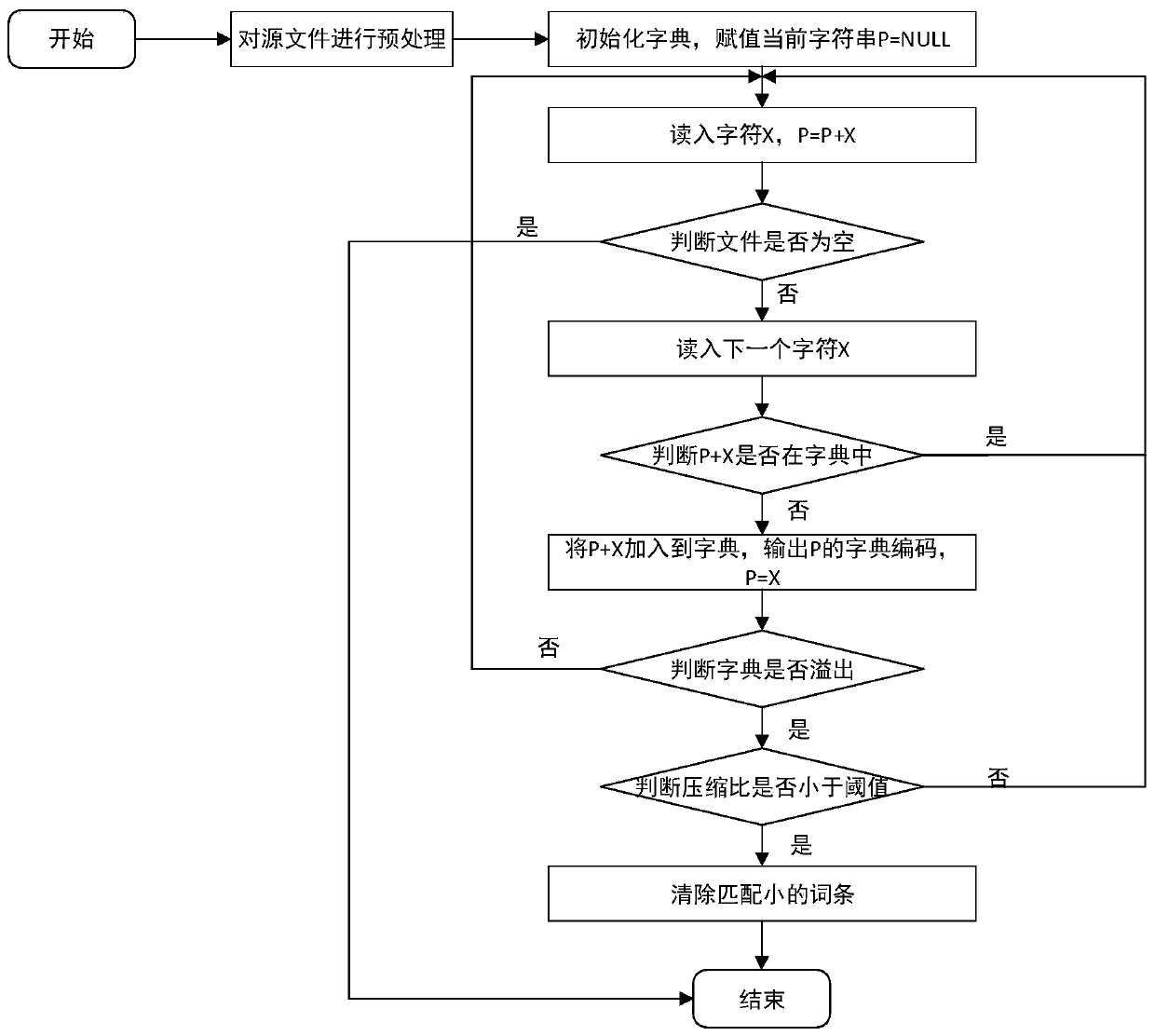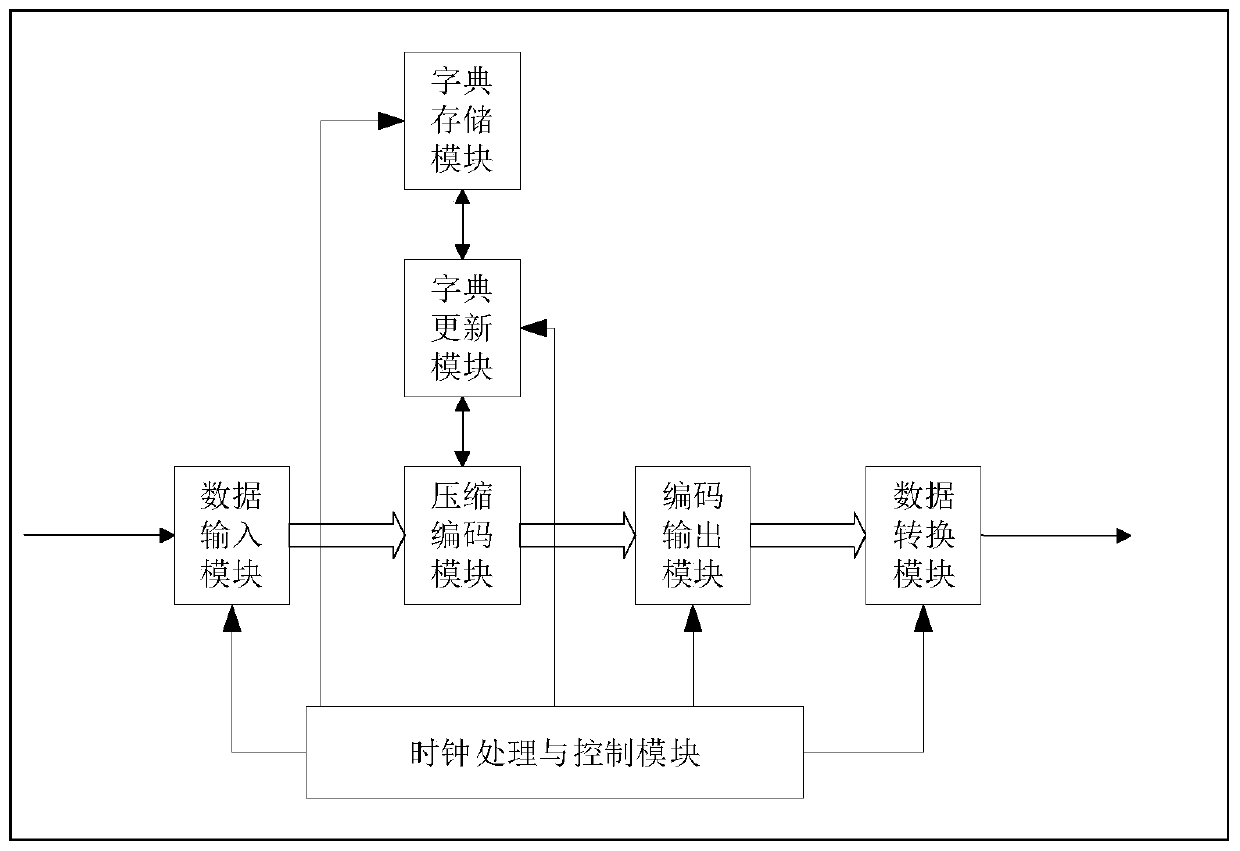Text compression method
A text compression and dictionary compression technology, applied in electrical components, code conversion, etc., can solve the problems of low compression rate and weak adaptability, and achieve the effect of high compression rate, saving memory space and reducing cost.
- Summary
- Abstract
- Description
- Claims
- Application Information
AI Technical Summary
Problems solved by technology
Method used
Image
Examples
specific Embodiment approach 1
[0018] The concrete steps of method of the present invention are as follows:
[0019] Step a, converting the source file into a binary file, using dictionary compression, and using a hash table as the entry storage structure;
[0020] Step b, perform unified encoding according to the result of dictionary compression output;
[0021] Step c, the file is operated on the hardware platform according to the encoding dictionary.
specific Embodiment approach 2
[0023] Different from Embodiment 1, in the text compression method of this embodiment, step a converts the source file into a binary file, and defines:
[0024] src is used to store source files;
[0025] include is used to store header files;
[0026] lib is used to store compiled library files;
[0027] bin is used to store compiled executable binary files;
[0028] Include the following steps:
[0029] Step a11, create a new folder and name it code;
[0030] Step a12, create subdirectories under the code directory, name them src, include, lib, bin respectively, and create a cmake compilation file under the code directory, name it CMakeLists.txt, and write in it, including the following steps:
[0031] Step a121, setting the cmake version and project name used;
[0032] Step a122, setting the directory where the compiler and the compiled executable binary file are generated, and setting the directory as a link directory;
[0033] Step a123, setting the directory where ...
specific Embodiment approach 3
[0050] The difference from Embodiment 1 or Embodiment 2 is that in the text compression method of this embodiment, the finite state entropy coding described in step b uses one number to store information before and after compression, saving memory space, and uses decimal bits to record information. Finite state encoding requires only one natural number, the state, to keep track of its current position. This is done by distributing the symbols uniformly rather than in a range, i.e. putting the information in the least significant position, the state x ∈ N contains equal to log2(x) bits of information, furthermore, no multiplication / division is required to update the state, when we are in Change the rules when processing symbol s:
[0051]
[0052] Include the following steps:
[0053] Step b1, creating a coding table according to the probability distribution of symbols in letters;
[0054] Step b2, shorten the execution time, generate three variables for each symbol, namel...
PUM
 Login to View More
Login to View More Abstract
Description
Claims
Application Information
 Login to View More
Login to View More - R&D
- Intellectual Property
- Life Sciences
- Materials
- Tech Scout
- Unparalleled Data Quality
- Higher Quality Content
- 60% Fewer Hallucinations
Browse by: Latest US Patents, China's latest patents, Technical Efficacy Thesaurus, Application Domain, Technology Topic, Popular Technical Reports.
© 2025 PatSnap. All rights reserved.Legal|Privacy policy|Modern Slavery Act Transparency Statement|Sitemap|About US| Contact US: help@patsnap.com



